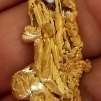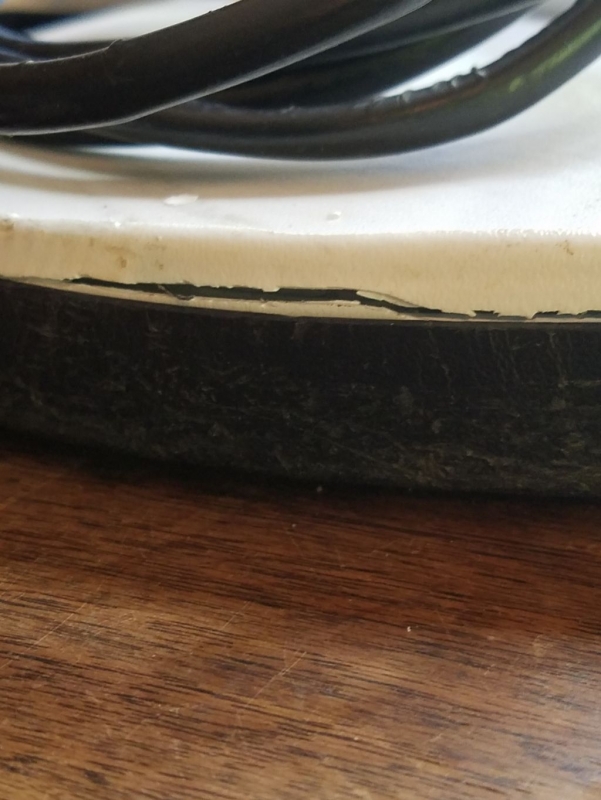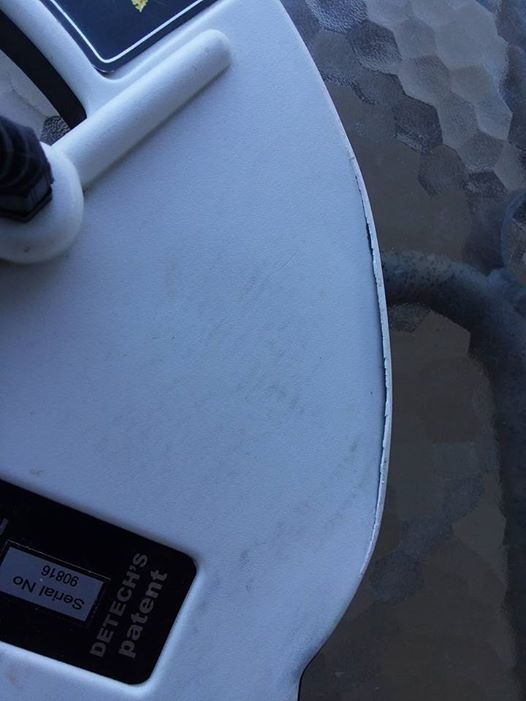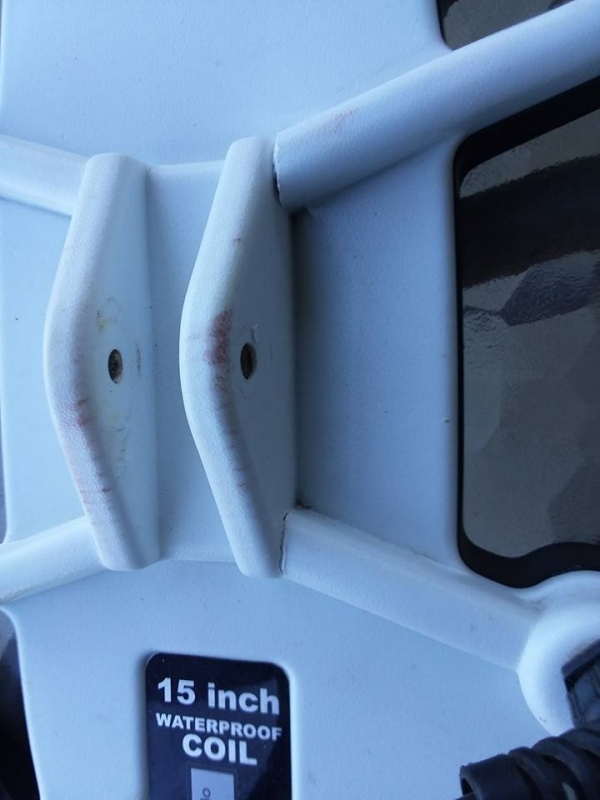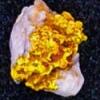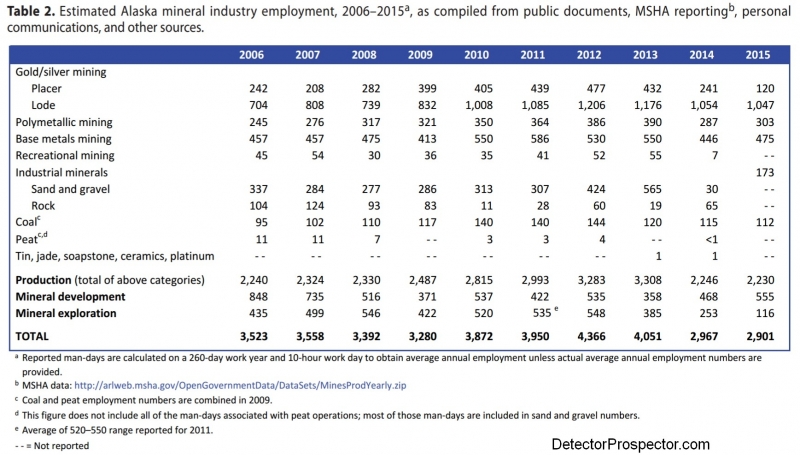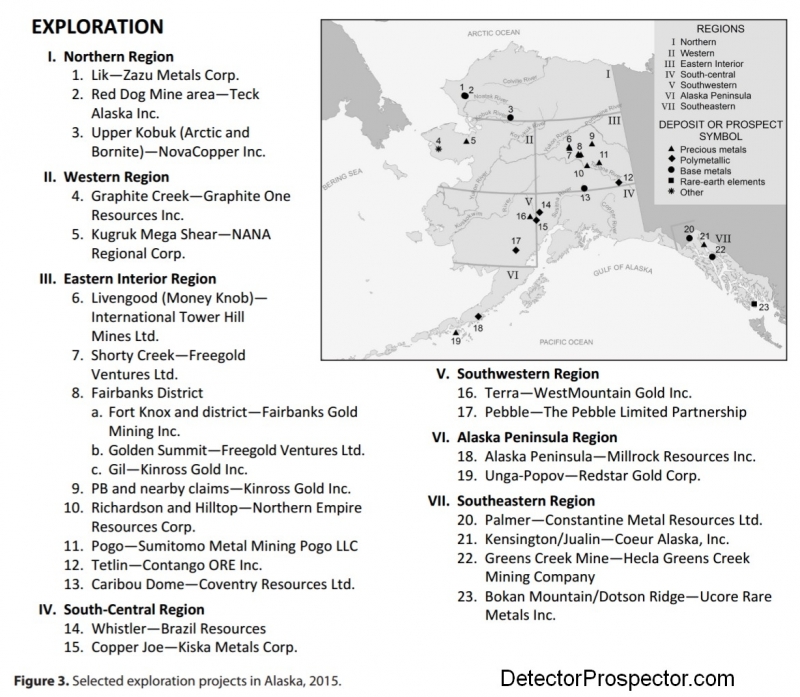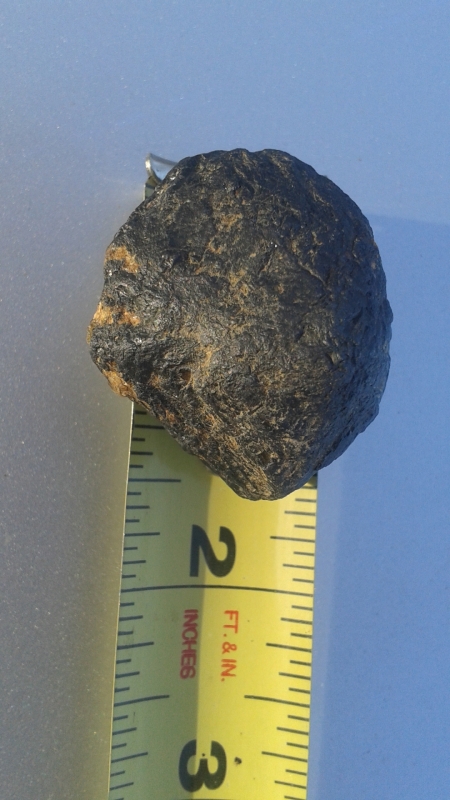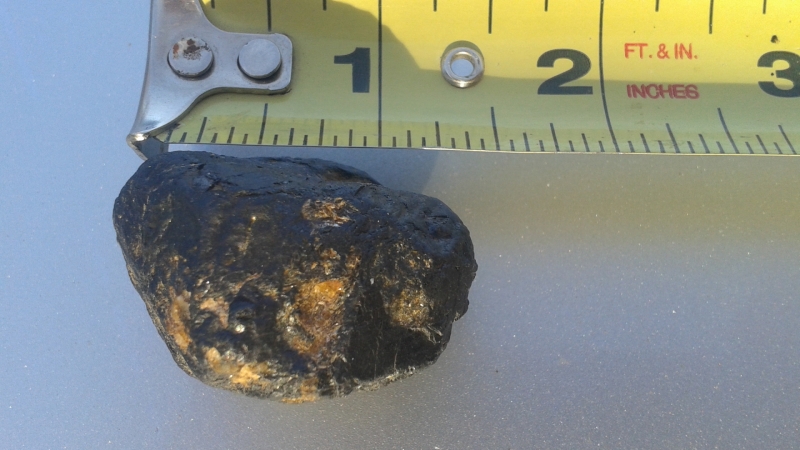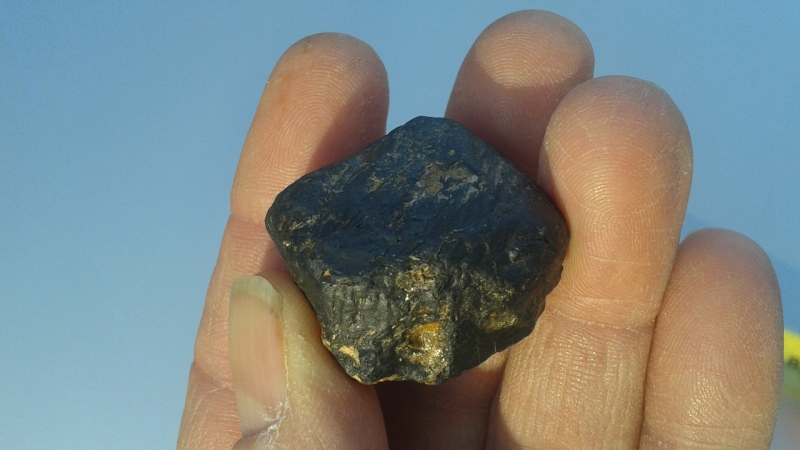Search the Community
Showing results for tags 'advice and tips'.
-
Just some good advice if you ever sell some detecting equipment, always purchase extra insurance. Priority mail covers only 50 bucks !! Bought this great Detech coil spiral wound from a friend....was in perfect condition but I found it a bit heavy for all around use. I decided to sell it to a fellow who "was" going to use it back in Virginia for relics as its a double d coil and would have worked out fine if it was not " DESTROYED" somewhere by usps . So, if you're shipping something over 50 bucks buy that extra insurance....I am hoping it still works, going to give it a try tomorrow and see....looking at it I doubt it.......Insure, insure for sure next time!
-
Something I've been thinking about is "growing the hobby." It's kind of a tricky thing. For detector manufacturers to survive, there is a need to expand the reach and interest in metal detecting as a hobby. But, the catch 21 is that there are less and less relics and old coins to dig each year. The more people get into detecting, the less old stuff we find. And the finds are what get people into detecting in my experience. It's a lot harder to get excited about finding 37 cents at a park than it is to find a trime or a colonial buckle. In talking to old timers, the "good ole days" seemed to be the 70's, 80's and early 90's - when silver was easier to find and every site wasn't pounded to death. That's why making detectors that out-perform current machines is so important. A deeper, better discriminating machine can breathe new life into old spots, which is what most manufacturers should be working on. What do you think about introducing the hobby to new generations? Would you prefer it stay an "old guy hobby," or would you like to see the younger crowd pick up where you leave off? How do we deal with the fact that each day, there is less treasure (including nuggets) to find?
-
Recently read Lucky's post about his Rye Patch adventure. Nice job guys and gal. He mentioned "we cover hundreds of acres with our coils a day". I'm pretty sure he didn't mean that literally, it just felt that way. Anyway, it got me wondering how much ground are we covering with our coil in day. For the sake of simplicity let's assume we are swinging a 12" coil in a 6' arc. Therefore we cover 6 sq. ft each swing. To cover an acre (43560 sq. ft) we need to make 43560/6=7260 swings. Also let's assume we are taking 3 sec./swing. Then 7260 swings x 3 sec/swing=21780 sec or 21780/3600sec/hr=6.05 hrs. So to put your coil over an acre of ground with a modest swing rate takes about 6 hours excluding any digging, eating, or whatever. You could cut that time by swinging faster or using a bigger coil, but covering an acre takes a fairly long time. You also could move faster and pass over ground between each swing, but your coil is still only seeing one acre. Food for thought. Damn, I got to get a hobby.
-
We all seem to use a fair bit of technology these days in the pursuit of gold and pleasure. We have detectors, maps, gps's, phones, books, scans, photos, videos, cameras, stories, etc. etc. not to mention our computers and drives we use to record and back these things up. Some are mobile and some stay at our homes and some are in the cloud. A few months ago one of my devices stopped working and I know I lost some data. It is data I may not 'need' but without it I don't have it as a record. I may have lost some find points for the Minelab 3030 on XChange2 because I didn't have a backup of the backup so to say. Steve sent me some private messages about it but I think it would be a good topic to help us review, store and share our data with someone or not lose it easily. What do you do with your computer backups? Do you just backup online? When you travel, how do you sync your data so that all files and pictures are current on your devices? How do you purge your duplicates so you don't run out of storage space on your external and internal memory? How do you prepare for a trip and what do you do when you come back from a trip? I hope to copy someone's procedure or modify mine to a more simple system. Mitchel
-
I find myself nugget hunting alone all the time. The trouble here in Texas it's next to nothing in the way of gold to be found. You find most people coin hunting and some relic hunting. If you said anything about nugget hunting I'm sure they wouldn't know what you're talking about. I've got a nugget hunting trip plan and been talking with a friend in another state that did hunt but I don't believe will ever again. So tell me if you going it alone and if not then how. Chuck
-
Some may say that it's the detector in front of the guy and others may say it's the guy behind the detector. I say it's a little of both and the guy who will admit he may not know it all. Like another post this guy was asking for help to bring him up to speed on his GPZ. Oh don't get me wrong you do have to be where the gold is to start. Anyone who goes out and buys this hot new detector has to be willing to put in the time and make note of what works best. I say this has to be with you every time you go out in the field to detect. It's said the proof is in the pudding but in your case it's more gold found. A lot of you know Uncle Ron. Well at one time he had this old SD 2100 and found more gold than most with a newer detector. If you would have seen the coil he had on it you may had felt sorry for him and gave some gold to him. I don't know what he swings now but it was all about him knowing his detector and what it could do for him. I posted this just to give you more to think about to make you a better nugget hunter. Chuck.
-
So I've been working on my new dredge and its turning into a chunk of change. That has me thinking I need to plan a bit. Been lucky to date I have only lost a GEO pick but even that is 60.00. I'm looking for ideas as to deter people from getting into my stuff and vandalizing or stealing. What are the rest of you guy's doing? So far I have cables and locks for the dredges and I ordered security bolts to secure the motors. Looking at a game cam to post on a tree at the main road to get a picture of any driving in figure i'll get a license plate that way as well as a profile. Anyone have a favorite camera? Maybe some" smile your on camera signs"? I am looking at some camouflaged tarps and I did paint up some steel lock boxes for hand tools and small gear. Anyone use GPS tracking devices? Not looking to set up booby traps to hurt people but if anyone has a landmine that blows out crap, I'm listening Here are the lock boxes I painted.
-
Went for a drive down the Feather River Canyon yesterday. Beautiful day, lots of water everywhere. With lots of water, comes lots of bugs. As the sun was starting to set, the mosquitoes and buffalo gnats were horrendous. So make sure bug repellant is in your bag. Lots of water made for a good scouring of the riverways. Should make for a good prospecting and detecting season.
-
Much has been written about prospecting and open holes. Let's try to keep some things in perspective. It is a well known and established fact that gold nuggets can be found in areas that have been and are being dry washed. (Large pits are left open or gullies are destroyed.) It is also a known fact that gold is still found where the old timers used ground sluices extensively in areas where there was enough water. (Large boulders and rocks line the hillsides with trees and growth coming out of these old digs.) The 'signs' of these activities sometimes gets us excited if we own a metal detector. We know they didn't get it all. A more recent sign of gold in an area would be unfilled holes in a nugget patch. (There can also be rake piles where someone got the iron stones out of the way or chaining marks very dense.) We can sure get mad about this or we can 'read the holes' and find what is left. We might even want to 'thank' the jerks who left the holes open. (We might learn that WE didn't get it all and someone has gone back to OUR patch and found nuggets we missed!) There is another way for us 'hole fillers' to think about things. (It is not all bad ... make some lemonade mates.) We should get 'excited' if we go to an area where there are holes (filled or not) because it means there were targets ... and you HAVE TO BELIEVE that there are still some good targets left. Think about it. You have these places where to detect: 1. A 'virgin' place with perfect patina and no signs of digging, scraping or mining. (Might be good for meteorites!) 2. A place that has 'old' dig holes that are fairly shallow but the depressions are there. 3. A place that has more recent holes which are less than 10" deep and some are unfilled. 4. A place with a lot of dig holes, many unfilled and some are very deep. Your detecting equipment is a 7000, a 5000/4500 with the new coils or something else which is 'state of the art' so to say. Please rank where you spend your time. Mitchel P.S.: When done fill your holes because there will be even better equipment coming out and you will want to go back to your patch. Save the locations on your GPS.
-
When detecting with 3 or 4 people and 1 finds a patch should it be shared or is it the the finders alone?
-
Quite often l have seen detectorists arrive at a new spot full of enthusiam and upon arrival jump out of the car, grab their detector and race off hurrying here and there like a headless chook swinging aimlessly in their excitement to find that first elusive bit of gold. Only to be dissapointed at the lack of gold finds and quickly ready to write the area off and move on. I speak from experience because l was one of those. However several of those spots kept calling me back. And when I did return it was with a contolled enthusiam. Instead of jumping out of the car and racing around I took the time to look about and read the ground. I took the time to get the detector running smoothly and most importantly I took the time to carefully detect the area I had chosen, thouroughly working the area in a unhurried manner. And on most occasions I was rewarded with gold. Yes gold from an area I was too quick to write off initially because I was in too much of a hurry to properly access the potential that was right in front of my nose. So all l can say is slow down, plan you attack and have patience and work the area properly and don't be too quick to write a spot off or you will leave it behind.
- 21 replies
-
- recovery devices
- geology
-
(and 2 more)
Tagged with:
-
I received the following email: "My name is *********** , a logger from ***********. I'm wanting to move to Alaska and start a new life with my family. I don't have much of anything. I'm probably one of the hardest workers you will ever meet and I'm honest. I'm looking for a chance at working a claim and learning what there is to learn. I have experience in running a rock crusher - now that was a fun, six years never a dull moment! Welding, mechanic diesel and gas, can build you a house start to finish, my chain saw sleeps in my bed room next to my splitting mall. How do I get a chance in working a mine and owning one?" I have received lots of requests similar to this over the years. Back in the 1980's we literally had people show up at my mining shop with the family in a vehicle, possessions strapped on top, come to Alaska to strike it rich. Here is a bunch of information. I hope it helps - good luck! According to the October 2014 Economic Impacts of Placer Mining in Alaska: There were 646 placer mines permitted by the Alaska Department of Natural Resources (DNR) in 2013. DNR estimated 47 percent of permits (295) placer operations were mined in 2013. In 2013, there were approximately 1,200 direct, mostly seasonal, jobs in Alaska’s placer mine industry. On average, each placer mine had four workers. However, approximately 27 percent of placer mines were run by one person and there are a few significant larger operations (50+ workers). Of the 1,200 workers, approximately 73 percent (880 workers) live in Alaska. Of those Alaska residents, approximately half live in Anchorage/Mat-Su Borough (26 percent) or Fairbanks (26 percent). The remaining half (48 percent) live in communities elsewhere in Alaska. Total direct income, including wages, shares of production, and owner’s profits, are estimated at $40 million for 2013. For miners receiving compensation, 56 percent were paid a wage, while the remaining 44 percent were compensated with a share of gold production. That was 2013 but it gives you some basic figures. Maybe just over 1,000 seasonal jobs, and not all of them from people living in the state. Being located there would help though. Many of these jobs go to family members or long time, trusted employees, so there are few openings on a yearly basis. Still, a person has a shot at it. So how to go about it? All I can offer is what I would do if I did not know anybody. The easiest place to start would be to contact the Alaska Miners Association at http://alaskaminers.org/contact-us/ and purchase their latest Service Directory. I am not sure what it costs now but it used to be $20 (or included with membership). It includes a listing of all the businesses that supply and service miners in Alaska; information on land status, permitting, agency lists, State mining law, and the membership list of the AMA, Alaska's most influential mining organization. Over 1000 miners and mining related organizations are listed with contact information. The key is the membership list with names and contact information. That gives you a place to start with either phone calls or letters. Most actual mining operations in Alaska are members of the AMA. If you are interested in employment at a lode mine, the major mines information is also in the Service Directory. More information can be gleaned from the latest state report - Alaska's Mineral industry 2015. Keep an eye out for a 2016 report soon. According to the report "Total mineral industry employment in 2015 is estimated at 2,901 full-time-equivalent jobs" Here is the chart from the report: Note this chart shows less than half the number of placer employment as the figures quoted in the 2013 report and only 120 in 2015. This probably reflects a difference in actual wage and salary type workers versus one person operations or family members and people working for a share of the take. Still, it can be seen overall numbers dropped quite a bit the last few years. Also from the report, here is a map of major mining and exploration projects in Alaska. You can read about these in detail in the report, and a little use of Google can give you employment contact information for each company, job openings, etc. Start at the AMA Links Page Check out the Mining and Petroleum Training Service For opportunities in mining all over see Mining Career Opportunities at InfoMine http://www.infomine.com/careers/ HELPFUL LINKS FOR THE MINERAL INDUSTRY IN ALASKA DEPARTMENT OF NATURAL RESOURCES • Recording Fees | http://dnr.alaska.gov/ssd/recoff/fees_RO.cfm • Public Information Center | http://dnr.alaska.gov/commis/pic/ • State Uniform Commercial Code (UCC) Documents Search | http://dnr.alaska.gov/ssd/recoff/ Division of Mining, Land & Water • Mining Applications and Forms | http://dnr.alaska.gov/mlw/forms/ • Fact Sheets | http://dnr.alaska.gov/mlw/factsht/ • Annual Placer Mining Application (APMA) 2015 | http://dnr.alaska.gov/mlw/forms/14apma/ • Annual Rental | http://dnr.alaska.gov/mlw/factsht/mine_fs/annualre.pdf • Leasing State Land | http://dnr.alaska.gov/mlw/factsht/land_fs/lease_land.pdf • Land Lease & Contract Payment Information | http://dnr.alaska.gov/mlw/factsht/land_fs/lease_contract_payment_info.pdf • Production Royalty | http://dnr.alaska.gov/mlw/factsht/mine_fs/producti.pdf • DNR Production Royalty Form | http://dnr.alaska.gov/mlw/forms/mining/royalty_fm.pdf • Exploration Incentive Credit Program | http://dnr.alaska.gov/mlw/factsht/mine_fs/explore.pdf Division of Geological & Geophysical Surveys • Publications On-Line | http://dggs.alaska.gov/publications/ • Interactive Maps | http://maps.dggs.alaska.gov/ • Geologic Maps of Alaska: Online Map Search Tool | http://maps.dggs.alaska.gov/mapindex/ • Unpublished Geology-Related Data (Alaska Geologic Data Index) | http://maps.dggs.alaska.gov/agdi/ • Geologic Materials Center | http://dggs.alaska.gov/gmc/ • Geochemical Sample Analysis Search (WebGeochem) | http://www.dggs.alaska.gov/webgeochem/ • Minerals Report Questionnaire | http://www.dggs.alaska.gov/minerals_questionnaire Alaska’s Minerals Data & Information Rescue in Alaska (MDIRA) Project Websites • MDIRA Portal Home Page | http://akgeology.info/ • Alaska Mining Claims Mapper | http://akmining.info/ • Land Records Web Application | http://dnr.alaska.gov/Landrecords/ • State Recorder’s Office Search | http://dnr.alaska.gov/ssd/recoff/searchRO.cfm • Alaska Resource Data Files | http://ardf.wr.usgs.gov/ • USGS Alaska Geochemical Database (NURE, RASS, PLUTO…) | http://pubs.usgs.gov/ds/637/ • Guide to Alaska Geologic and Mineral Information | http://doi.org/10.14509/3318 • Alaska State Geo-Spatial Data Clearinghouse | http://www.asgdc.state.ak.us/ DEPARTMENT OF COMMERCE, COMMUNITY, AND ECONOMIC DEVELOPMENT • Minerals Information | https://www.commerce.alaska.gov/web/ded/dev/mineralsdevelopment • Community and Regional Information | https://www.commerce.alaska.gov/web/dcra/ResearchAnalysis • Alaska Industrial Development and Export Authority (AIDEA) | http://www.aidea.org • AIDEA Supports Mining | www.aidea.org/Programs/ProjectDevelopment/30YearsofMiningSupport.aspx DEPARTMENT OF REVENUE • Mining License Tax | http://www.tax.alaska.gov/programs/programs/index.aspx?60610 • Motor Fuel Tax Claim for Refund | http://www.tax.alaska.gov//programs/programs/forms/index.aspx?60210 • Alaska Motor Fuel Tax Instructions | http://www.tax.alaska.gov/programs/documentviewer/viewer.aspx?5086f
-
My buddy brought this thing back from a gulch in Colorado. He wasn't having any luck finding gold with is Atgold so he started using his magnet on his pick. He happened upon this thing. I don't know what to call it yet so it's a thing right now! LOL Anyway it stuck like glue to his pick but he told me his machine would not hit on it! I told him he must of had his machine set up wrong. OK. So I bring it home and tried my Atpro on it with my already set GB to 80 and not a peep at full power, Pro zero with no disc! I then lowered my GB to around 60 and there I could get a hit. It would not hit at the center of the coil but would hit as the coil approached and departed the target with an iron tone. The Propointer A/T won't peep even touching this thing but yet it is strongly attracted to a magnet!! It's small and heavy weighing in at 2.7oz. What the heck is it???
-
How many New targets are we really finding? To answer this question it is a bit more 'complicated' than just a new coil vs an old coil or a new detector vs an old detector although those are part of the variables. This question now comes to mind when I am using the GPZ 19 on previously worked patches. When I go to the beach and grid a box that is 100x100 with my 3030 I will find targets. If I assume there are 50 targets within that area and I get 20 I might be doing pretty good without knowing for sure the total potential targets and how long I take to hunt it out. I will not find them all ... I will miss some ... and then I'll move on to another pocket ... sometimes. The number I miss depends on my grid pattern, the type of target, if I overlap my swing, soil/salt conditions, discrimination level, shape of target and of course, depth. If I am finding really good targets and I go back over this area I might find 5 more that I missed the first time ... and I still haven't gotten them all. If a friend of mine comes over that same square with his White's Surfmaster Dual Field PI he might find 15 targets. Some of these targets would be new (12) and some missed (3). (Those are just guesses but you get my point.) The point is that the PI will find New targets because it can go deeper and see invisible targets but it is also possible to find missed targets that my 3030 could still see if I went over it. When I use the GPZ 19 looking for meteorites I am primarily looking for missed targets because the targets are so shallow. This includes going to a new area previously undetected because part of the 'miss' is not going to an area because of luck or inadequate research. Now when I am out on a gold patch with the GPZ 19 I am looking for missed targets and New targets. An advantage of the GPZ 19 on the missed targets is that it is a much larger coil. It is also a more advanced, quieter technology. (Missed targets need to be a bit larger because the GPZ 14 will see smaller targets than the GPZ 19.) New targets (those not detectable with the GPZ 14) would be those that are deeper and those 'invisible' to the GPZ 14. My mentors have been going over old patches with new technology for years. Some of what they find is New and some of what they find is missed even to this day. So this is an 'old game' with just a new player (me) hoping to be productive while swinging. I want to find something every trip. Am I going to find more missed targets than New targets? It depends on where I search so I need a mix of new ground and hunted out patches. There is still deep gold! Slow, deliberate and methodical gridding will have to win the New targets (if the patch has depth) and the missed targets will follow. This will mean many skunk days. The old patches aren't being replenished unless it is a wash. Mitchel (added after Chuck's response))
-
I hope you can help me. Years ago I saw a science fair project that had a large powerful magnet. The magnet was held up about two feet over the surface. A piece of string was attached to the surface with an piece of iron tied to the other end. The magnet was powerful enough to pull the piece of iron straight up, the entire length of the string. There was a bout a foot gap between between the magnet and the piece of iron. It was really cool looking. Anyone know where I can find such a magnet? Thank you.
-
After finding a nugget how many of you mark it by a small pile of rocks or a stick poked in the hole? Why do you do this? A . To show others I have been there and got them all? B. To define a pattern to find more? C. I don`t know why I do it, but I do. Just curious.
-
Jason made a comment on another thread about the virtues of not getting bogged down hunting small gold. I wanted to comment without getting off topic so here goes. In my opinion big nuggets generally go to the first coil over them. They are big and so kind of hard for any good detector to miss. Let's say there is a nugget that a detector can hit at 20". That means as long as any of those nuggets or larger exist in the top 20" you get them. Now you go back and hunt with a machine that can hit those same nuggets to 24". The problem is for all intents and purposes you are now detecting only 4" of additional depth, and the odds of one of those targets being in 4" of ground is far less than the odds of one being in 20" of ground. And in fact due to the way many desert placers form, your odds are even worse because many desert placers get leaner the deeper you go. Those big deep nuggets of your imagination may just not be there, as has been proved by many (not all) failed bulldozer pushes. There is therefore a lot to be said for Jason's method of covering lots of hopefully virgin ground fast with larger coils to go for the larger gold even if you give up some depth doing it. I spent much of my detecting career hunting like that. The problem is pretty simple. It is getting very hard to find virgin ground that has good enough gold for this method. Days if not weeks can pass between decent finds, making this only for people with lots of time and extreme patience. My method now generally has shifted to cleanup mode. Hunting slowly and methodically chasing smaller gold with the GPZ with the idea that any deeper nuggets I get over will take care of themselves. Oftentimes for most well hunted areas that means only getting small gold but at least I am finding gold, and the GPZ hits about as small as anyone could wish. And if a larger one comes along I have high confidence I will nail it easily enough. As anyone can attest however, those big ones are getting very rare. Novices in particular I have to recommend slow and careful, going for the small stuff. Finding gold, any gold at all, is an extremely important confidence builder and essential if the novice is not going to quit the game after only a few outings. If money is no object, there in my opinion is no surer way to get some gold than to get an SDC 2300 and go as slow and as methodically as possible with it. If you can't find gold with a 2300 you are in entirely the wrong locations, or electronic prospecting simply is not for you.
-
As many of you know, I ain't very smart...still, I have a question. When I click on a topic about two or three posts down the image elongates and has vertical lines...this just started this morning and happens on other forums. Does anyone have a clue what is happening; does this mean my 7 year old Studio 17 is dying? If it is dying what are recommendations for a replacement...for some poor not very smart soul like me? thanks fred
-
Im just curious on how a guy goes about applying for a job like this? I have 5 yrs of experience running a dozer, excavator, loader, skidsteer and crushing operation. Its not gold mining but the screen, wash plant and convayors all run the same.
-
If you purchased a White's metal detector and earned accessory code bucks they are no longer valid. I was given 50.00 bucks after a purchase of a MX Sport only to find out that the special is time limited. Oh well, Next time I'll read the fine print and redeem any specials immediately whether or not I need anything at the moment. Update I called White's and explained to them I didn't need anything at the moment and they took care of me. Great company for machines and customer service. Thanks White's Electronics.
-
Will be out in Littleton....Boulder area for 3 - 4 weeks. Would like to do some nugget shooting (maybe panning) while Im out there in Sept. Any areas anyone would suggest, in say a 50-100 miles of either place? Will have my Gold Bug Pro and pans. Never have done any nugget shooting been detecting for 50 plus years. Dan
-
We all know it, but how many of us actually do it? I'm talking about asking your friends and total strangers about places to hunt. Many old timers know about places that no one else does. And they know other people who know places, and they know people, and so on. Once you gain their trust and are honest and straightforward with them, all kinds of doors can be opened to you. Here is a perfect example; It's actually a long story how this came about but suffice to say, this little piece came from an "estate" that her late husband had acquired many years before. This, along with several antique tools, were bought for less than $50. She had no use for them anymore and had no family members that were interested. I've looked online for similar items but haven't found anything this big or impressive out there. There is a small label on the back that says "Anaconda mine". No idea which one as there are at least three of them in the west. In the direct sunlight the display of color is breathtaking!
-
Guy's I am starting to acquire a lot of prospecting stuff and it is scattered all over the place. This year I am going to make a effort to get it together and would like to know what everyone else is doing. Do you just heap up the shed or is the closet stuffed full? Mabey you built a display rack to hold all the metal detectors? Any way I would appreciate any ideas while in the planning stage. At this point I plan to weed out any unused stuff( if I can find it) The rest is headed for totes according to prospecting task and the detectors will get a rack to keep safe. I want to have specific packs set up for the different tasks for grab and go scenarios. And will probably end up with a corner of the shed. Not really sure how I ended up with all this crap, but I sure do know it snuck up and bit me in the donkey.
-
When I first began fly fishing, I caught zero fish and lost a bench if flies to bushes and snags. Since I couldn't count fish caught, I started tracking flies lost, with the goal of minimizing that number. Gradually it dropped to near zero, and number of fish caught began climbing, along with the size of my grin. So, maybe this is too analytical an approach, but what would you say your "trash-to-treasure" ratio is, per outing, and how has it improved, or not, over time?

